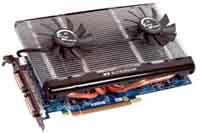I can help some, but I've never done RAID-0 with 4 drives, so maybe someone who has can comment on that.
Theoretically, the 4 drives combine speeds and give you a drive that is 4 times faster, but this does not happen in reality, and I've heard that adding more than 2 drives to the raid-0 array causes a case of diminishing returns compared to a 2 disk raid-0 array.
Add to this the fact that RAID-0 is non-redundant and a 4 drive raid-0 array will totally fail if just one drive dies and all data is lost. The chances of a HDD failure in a 4 disk RAID-0 array without redundancy is probably too high to consider.
A RAID-0 built from 2 x WD raptors would make a lot more sense, giving you the real advantage of more speed without the added risk of drive failure from having 4 drives prone to failure.
A second volitile raid-0 array could be configured as a backup HDD using your other two drives, offering some data security, although it's the nature of RAID-0 to be unreliable in the long term.
A better option may be to use a mirrored array of two striped arrays, This is RAID-0+1. Look down this page to find it and other raid configurations like Raid-1+0 or RAID-10.
http://en.wikipedia.org/wiki/RAID#RAID_0SCSI raid controllers also offer a lot better speed than the onboard solutions provided with motherboards these days. Also, Windows XP has options to set up raid-0 arrays in software without using any onboard controllers, but this is not as fast as SCSI contollers either.
Partitioning a performance RAID-0 array is a no-no as it will increase drive seek times and wipe out speed advantages of the array.
Placing an operating system on the RAID-0 array brings new challenges because Windows will only install to 4kb formatted cluster size and not the larger clusters required by a performance raid-0 array. You need to build a customised winXP install disk with a cluster size fix.
The first thing you need to do is set up a raid array using the raid bios, after enabling your raid parameters from your main bios. The two bios's are seperate and accessed differently. READ YOUR MANUAL
After your raid-0 array is set up in bios correctly, you need to install the raid drivers from floppy drive during windows installation by hitting F6 at the prompt when it asks, if those drivers install correctly, you'll find windows will install properly, if you don't get that driver install done correctly, windows will not recognise the array and it will fail installation.
Ok, I will copy a post I recently answered in another forum here:
_________________________________
"The best performance, and indeed any worthwhile performance increase may depend on how you set it up, and your money is probably not well spent if you don't configure it properly.
I'll explain how mine is set up and invite comment if anyone knows better because this is what I did based on the best info I had at the time.
Drives available: 2 x 200gb WD SATA2 plus 1 x 250gb WD SATA2
I partitioned the 250gb drive to 50gb on C: and installed XP.
I set the 2 x 200gb drives in RAID-0 with a 128k stripe size and 64kb formatted cluster size. The RAID-0 array DOES NOT GET PARTITIONED or performance will be adversely affected.
I built a slipstreamed windows XP SP2 install disk using nlite, and before I compiled the .iso, I added and overwrote these files from a pre-SP2 disk into the slipstreamed SP2 I386 folder, (stressing that pre SP2 files must be used to overwrite the SP2 files) :
AUTOCHK.EXE
AUTOCONV.EX_
AUTOFMT.EXE
DMADMIN.EX_
SETUPDD.SY_
SPCMDCON.SYS
UNTFS.DL_
This allows a SP2 Op Sys to run on clusters which are over 4kb, as the new MS default cluster size for all Op Sys's SP2 and above is 4kb and windows will refuse to install otherwise unless this fix is performed. Let's call it the "Cluster Fix". There may be another way to do this, but it's the only way I know how to do this at present.
Once these files are written into the SP2 slipstreamed disk folder, the folder can be compiled into an .iso ready for burning to CD, the CD is burnt and Windows is installed onto the unpartitioned RAID-0 array.
Explanations:
The highest performance needs XP (and everything else) running from the RAID-0 array.
128kb stripe size is the largest I could select on my nVidia raid bios. I believe expensive SCSI controllers can select a larger stripe size, so onboard RAID controllers seem to be limited in this regard.
Large cluster size is important to reduce seek times and move/read/write data faster. I chose 64kb because it was explained to me that the clusters on a 2 disk RAID-0 array should be 1/4 the size of the average filesize contained on the array.
Now this is a grey area for me, in that my average filesize is actually greater than 4 x 64kb, however, my large files are very large (iso's etc) which do not get manipulated often, therefore I estimate that the files I mostly use (games, apps, OS, etc) are approx. slightly less than the 4 x 64kb cluster size I chose.
This proved true, as the size of my array's data = 100gb's and the size on the array = 112gb's. So we see a waste factor of around 10%, and this is due to files not quite fitting neatly into multiples of 64kb.
32kb clusters will waste less space but won't perform as quickly, larger clusters will waste a lot more space, (on my array, due to my average filesize).
It was explained to me that random seek is the slowest operation on a disk, and therefore anything that can be done to improve random seek (as in when you are gaming) will pay off in speed improvements. I was also told that random seek cannot be accurately asessed with just any simple benchmarking tool and that determining random seek performance accurately involves a good understanding of the windows performance counters and even more understanding of how to interpret those results. I'm not trained in those areas, so I just have to take it as Gospel for now.
The array should not be filled much beyond 50% capacity or it will slow.
You use folders on a RAID-0 array, not partitions.
Suffice to say, my RAID-0 array is fast, or at least gives the illusion of being so, and THAT is how I did it.
My 250gb drive has a fully functional winXP op sys on the first 50gb partition and the second partition holds a copy of my RAID array less the RAID's windows install. I do not keep this drive active and only plug it in during backup operations. The backup drive in a configuration such as mine needs to comfortably hold the data or backup operations could be slow.
It also a "rule of thumb" that Hdd's get approx 10% faster every time the drive size is doubled, so based on that, 320gb drives are indeed the best value choice at the moment for a performance raid-0 array.
Hdd's with 16mb of cache will actually benefit from the increased cache in a raid-0 array (32mb combined cache) according to some sources, while having little effect in a non-Raid configuration."
___________________________________
Once you decide on a suitable RAID type and configuration, I might be able to help you build a windows install disk to maximise performance through large formatted clusters.
I'm not 100% sure of all my RAID-0 knowledge either so if anyone has some useful info to add, please do.
I hope that sheds some light.


 Mainboard: Asus P5K-Premium, CPU=Intel E6850 @ x8x450fsb 3.6ghz, RAM: 4gb PC8500 Team Dark, Video: NV8800GT, HDD: 2x1Tb Samsung F3 RAID-0 + 1Tb F3, PSU: Antec 550 Basiq, OS: Win7x64, Display: 24&
Mainboard: Asus P5K-Premium, CPU=Intel E6850 @ x8x450fsb 3.6ghz, RAM: 4gb PC8500 Team Dark, Video: NV8800GT, HDD: 2x1Tb Samsung F3 RAID-0 + 1Tb F3, PSU: Antec 550 Basiq, OS: Win7x64, Display: 24&



 Mainboard: Asus P5K-Premium, CPU=Intel E6850 @ x8x450fsb 3.6ghz, RAM: 4gb PC8500 Team Dark, Video: NV8800GT, HDD: 2x1Tb Samsung F3 RAID-0 + 1Tb F3, PSU: Antec 550 Basiq, OS: Win7x64, Display: 24&
Mainboard: Asus P5K-Premium, CPU=Intel E6850 @ x8x450fsb 3.6ghz, RAM: 4gb PC8500 Team Dark, Video: NV8800GT, HDD: 2x1Tb Samsung F3 RAID-0 + 1Tb F3, PSU: Antec 550 Basiq, OS: Win7x64, Display: 24&









